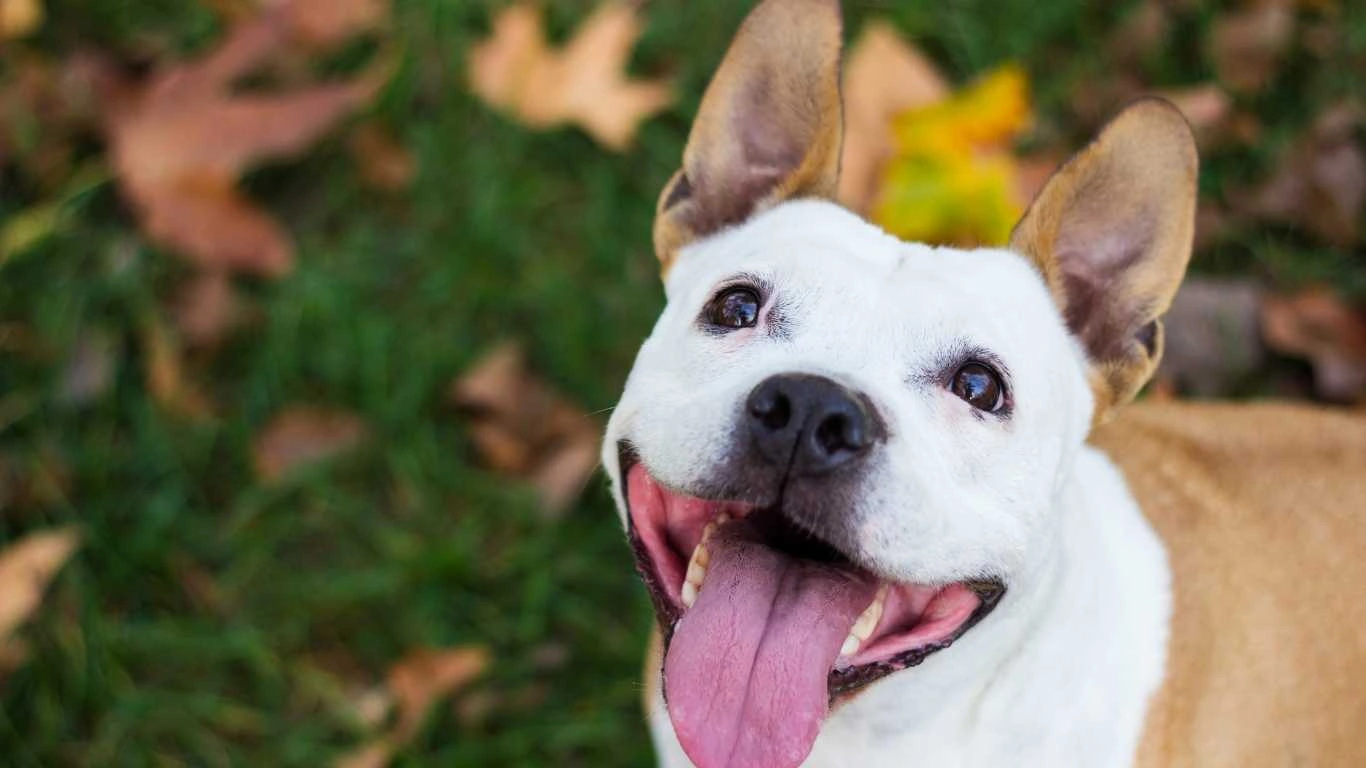How to Increase DHA in a Dog’s Diet for Better Health & Vitality
As a pet nutritionist with years of experience working closely with veterinarians and pet owners, I’ve come to understand just how important DHA (Docosahexaenoic Acid) is for a dog’s overall health. If you’ve ever wondered, “How to increase DHA in a dog’s diet?” you’re in the right place! DHA is an omega-3 fatty acid that plays a key role in supporting brain health, eye function, and even skin health. But here’s the thing: a lot of dog owners aren’t aware that their pets might not be getting enough DHA in their diet. It’s a common issue, but fortunately, it’s one that can be easily corrected with a little knowledge and some thoughtful food choices. Let’s dive into how you can boost DHA in your dog’s meals and the benefits of doing so.
Why DHA is Essential for Dogs

Before we explore how to increase DHA in your dog’s diet, it’s crucial to understand why DHA is so important. DHA is a type of omega-3 fatty acid found in fish oils, algae, and certain plant sources. It plays an essential role in the development and function of your dog’s brain and eyes. Just like humans, dogs need DHA to keep their cognitive function sharp, especially as they age.
Now, I’ve seen it firsthand at the veterinary clinic: older dogs often show signs of cognitive dysfunction, which can be due to a lack of DHA. That’s why it’s so important to make sure our furry friends are getting enough of it, whether they are puppies or seniors. From enhancing memory and learning abilities to supporting healthy vision, DHA is a cornerstone for optimal health!
Boosting DHA for Puppies
If you’ve recently brought home a puppy or are raising one, you’re in luck! Puppies experience rapid brain development during the first few months of their life, and DHA is a critical nutrient for supporting this growth. Think of it as brain fuel. Puppies with sufficient DHA tend to have better focus, quicker learning capabilities, and more energy overall.
- Adding DHA-rich foods to your puppy’s diet supports brain development.
- It can help prevent developmental issues later on.
- It also promotes healthy vision as your puppy grows.
I always recommend starting your puppy’s nutritional journey with high-quality food that’s rich in DHA from the get-go. The earlier you start incorporating these nutrients, the better off they’ll be in the long run!
Top Sources of DHA for Dogs

So, how do you ensure your dog is getting enough DHA? There are several excellent sources that can help you boost DHA in their diet. If you’re looking for natural ways to provide DHA, you’ve got a few options that are both nutritious and delicious for your dog!
1. Fish Oil
Fish oil is probably the most well-known source of DHA. It’s packed with omega-3 fatty acids and can easily be added to your dog’s meals. I’ve seen firsthand how much of a difference a daily dose of fish oil can make, especially for dogs with skin conditions or joint issues. Plus, it’s easy to incorporate—just a few drops over their food and you’re good to go!
- Choose high-quality fish oil supplements designed specifically for pets.
- Look for fish oil with high DHA content (this is key!).
- Be mindful of the serving size to avoid over-supplementing.
Not all fish oils are created equal, though. Some cheaper options are full of impurities or have lower DHA content, so it’s always worth investing in a reputable brand. When I recommend fish oil, I make sure to choose one that’s been purified to remove any potential toxins or heavy metals that might be lurking.
2. Fatty Fish

When it comes to whole foods, fatty fish like salmon, mackerel, sardines, and anchovies are rich in DHA. These fish are packed with the healthy oils your dog needs, and they offer a natural and tasty way to up your dog’s omega-3 intake. Whether you’re feeding them as a treat or incorporating fish into their meals, these options can make a real difference in their DHA levels.
- Salmon: A rich source of DHA that’s also great for your dog’s skin.
- Sardines: Packed with healthy fats, and easy to serve as a treat.
- Mackerel: Contains high levels of DHA, great for boosting brain health.
Just be sure to remove any bones before serving fatty fish to your dog. We want to boost their DHA levels, not risk any choking hazards! A great way to incorporate this into their diet is by offering small portions once or twice a week.
Does Your Dog Need DHA Supplements?
Now, you might be thinking, “Do I really need to give my dog a supplement for DHA, or can I just rely on their food?” The answer depends on a few factors, such as your dog’s age, health condition, and the quality of their regular food. If your dog is a senior, has cognitive issues, or is recovering from surgery or illness, DHA supplements might be a great addition to their daily routine.
In my experience, many commercial dog foods don’t contain enough DHA, especially those targeted at specific life stages or conditions. While some high-quality brands do include fish oils or DHA-rich ingredients, it’s often not in enough quantity to make a real impact. So, I tend to recommend adding a supplement to help your dog reach the optimal DHA levels they need for peak health.
How to Safely Add DHA to Your Dog’s Diet

Adding DHA to your dog’s diet isn’t as complicated as it might sound, but it’s important to approach it in a balanced and safe way. In my years of experience, I’ve learned that the key to a successful DHA boost is moderation and consistency. Too much of a good thing, even DHA, can sometimes lead to digestive upset or imbalance. Let’s go over the safest methods for adding DHA-rich foods or supplements to your dog’s meals, so they get the best benefits without any risks.
Start Slow and Monitor Your Dog’s Response
When you begin introducing DHA to your dog’s diet, it’s always best to start with small amounts. This allows you to gauge how their body reacts. I’ve seen dogs that thrive with DHA additions, but I’ve also had a few cases where their digestive system needed a little time to adjust. For example, if you start with fish oil or fatty fish, offer just a small serving for the first few days. Gradually increase the amount over time as you monitor for any signs of digestive discomfort or other issues.
For instance, when I introduced fish oil into my dog’s diet, I started with just a few drops over their food and slowly increased the amount to match the recommended dose. This cautious approach ensured there were no stomach upsets or unpleasant side effects. I also kept an eye on their coat, since healthy omega-3s should make their fur shinier and softer!
How Much DHA Does Your Dog Need?
As with anything in life, balance is key. When it comes to DHA, the exact amount your dog needs will depend on their size, age, and overall health. As a general guideline, most dogs benefit from between 50-100 mg of DHA per day, but larger breeds or those with specific health concerns may need more. Puppy foods often contain DHA for optimal brain development, while older dogs might require a higher dose to support cognitive function and joint health.
- Small dogs (under 10 lbs): Around 50-75 mg of DHA per day.
- Medium-sized dogs (10-40 lbs): Around 75-100 mg of DHA per day.
- Larger dogs (over 40 lbs): Around 100-150 mg of DHA per day.
Remember, these are just rough estimates. Your dog’s specific needs could be different depending on their activity level, any ongoing health conditions, or even the food they’re already eating. If you’re unsure about how much DHA your dog should get, consult your vet for personalized recommendations.
The Benefits of DHA Beyond Brain Health

We’ve covered how DHA benefits your dog’s brain health, but there are other exciting advantages that you might not know about. As someone who has worked in a veterinary clinic, I can tell you that DHA goes far beyond just cognitive support. Here are a few of the other incredible benefits DHA can provide for your dog:
1. Healthy Skin and Coat
One of the more visible benefits of DHA is its positive impact on your dog’s skin and coat. Omega-3 fatty acids, particularly DHA, help maintain a shiny, soft, and healthy coat by supporting proper hydration and reducing inflammation. I’ve had clients come in with dry, flaky skin on their dogs, and after a few weeks of DHA supplementation, they’ve noticed a significant improvement. Their dogs’ coats became shinier, and the dry spots were much less prominent.
On top of improving skin and coat health, DHA can help manage certain skin conditions like allergies or hot spots. I’ve seen dogs with chronic itching and irritation experience noticeable relief once their DHA intake was increased. It’s all about providing those essential fatty acids to nourish the skin from the inside out.
2. Joint Support and Inflammation Reduction
DHA’s anti-inflammatory properties are another reason I recommend it, especially for dogs suffering from joint pain or arthritis. By reducing inflammation, DHA can help your dog move more comfortably and reduce the pain associated with stiff joints. For older dogs, this can make a world of difference in their quality of life.
I’ve seen a number of senior dogs who have struggled with mobility due to arthritis, and after introducing a DHA supplement or more omega-3-rich foods, they showed improvement in their ability to move around. It’s one of the reasons I highly encourage fish oils for dogs that are getting on in years or those who are recovering from injuries.
Potential Side Effects of Too Much DHA
While DHA is incredibly beneficial, it’s possible to overdo it, and that’s where things can get tricky. Some dogs might experience side effects if they’re given too much DHA. I’ve had clients who got overzealous with adding supplements and noticed their dogs had soft stools or diarrhea. This typically happens when omega-3 intake is too high, and the body can’t process it all at once.
If your dog starts to experience any digestive upset after starting DHA supplementation, it may be a sign that you’re giving too much too quickly. Cut back on the dose and gradually increase it, as I mentioned earlier. Always monitor your dog’s reaction when changing their diet or adding new supplements. If you’re unsure about the appropriate amount, consult your vet before continuing with DHA supplementation.
Other Considerations When Increasing DHA in Your Dog’s Diet
It’s important to consider the balance of other nutrients in your dog’s diet. For instance, adding more fish or DHA-rich supplements might throw off the balance of omega-6 and omega-3 fatty acids, which should ideally remain in a 5:1 ratio for optimal health. Too much omega-6 can actually promote inflammation, negating the benefits of DHA. This is why a balanced approach is crucial. Look for high-quality pet foods that are designed to maintain this proper balance.
Common Mistakes to Avoid When Increasing DHA in Your Dog’s Diet

While it’s clear that DHA is an essential nutrient for dogs, there are a few common mistakes I’ve seen pet owners make when trying to increase their dog’s DHA intake. Over the years, I’ve learned that small adjustments can lead to big improvements, but it’s just as easy to get things wrong. Let’s walk through some of the most common pitfalls to avoid when you’re adding DHA to your dog’s diet.
1. Ignoring Quality Over Quantity
One of the biggest mistakes I’ve noticed is pet owners focusing too much on the quantity of DHA they’re providing, but not enough on the quality of the sources. Just because a product claims to contain DHA doesn’t mean it’s the best choice for your dog. Some fish oils or supplements are filled with fillers, low-quality ingredients, or even harmful toxins like mercury or other heavy metals.
When I recommend supplements or foods rich in DHA, I always make sure they’re sourced from high-quality fish, such as wild-caught salmon or sardines. Low-quality fish or fish that’s been farmed may have high levels of contaminants. Always check that the supplement is purified and tested for purity, especially if you’re considering adding fish oil to your dog’s daily routine.
2. Overlooking the Balance of Omega-3 and Omega-6 Fatty Acids
Another common mistake I see is not considering the balance of omega-3 and omega-6 fatty acids in your dog’s diet. Omega-6 fatty acids are common in many commercial pet foods, and while they are essential, they can promote inflammation when consumed in excess. The key is to ensure a proper balance between omega-3 and omega-6 fatty acids, which ideally should be about a 5:1 ratio.
If you focus only on increasing omega-3s like DHA and forget about omega-6, you might create an imbalance that could lead to inflammation rather than reducing it. This is where choosing the right food becomes so important. I always recommend looking for dog foods with a balanced nutrient profile or supplements designed to maintain this ratio. You want to promote health, not accidentally tip the scale in the wrong direction.
3. Not Monitoring Your Dog’s Health and Reaction
It’s easy to assume that once you’ve introduced DHA to your dog’s diet, everything will be fine. However, I can’t stress enough how important it is to keep monitoring your dog’s health and response after adding DHA-rich foods or supplements. As I mentioned earlier, every dog reacts differently to dietary changes, and while some dogs may thrive on added DHA, others might have a slightly different reaction.
In my personal experience, I’ve had clients who were really excited to introduce new fish oils to their dog’s diet but didn’t monitor closely enough. As a result, their dogs ended up with mild digestive upset or diarrhea. I always advise pet owners to be patient, start with small amounts, and track their dog’s reactions over time. If you notice any unusual symptoms, consult your vet to adjust the dosage accordingly.
Natural Alternatives to DHA Supplements

While supplements are often a go-to solution for increasing DHA, I always encourage pet owners to consider natural alternatives as well. Fresh, whole foods can be just as effective in providing DHA, and they come with the added benefit of other essential nutrients your dog needs. Plus, most dogs absolutely love the taste of fresh fish! Here are a few natural ways to boost DHA without turning to supplements.
1. Fish-Based Dog Foods
If your dog isn’t picky about food, switching to a high-quality fish-based dog food could be a simple way to add DHA to their diet. Many premium pet food brands now offer formulas with fish as the primary protein, including salmon, sardines, and mackerel. These are rich in DHA and other beneficial omega-3 fatty acids, and they also support your dog’s skin, coat, and overall well-being.
Some of the dog foods I’ve recommended in the past include salmon and sweet potato blends or mackerel and peas. These provide an excellent balance of DHA along with other vital nutrients like antioxidants and fiber, which support digestive health.
2. Home-Cooked Fish Dishes
For pet owners who enjoy cooking for their pets, preparing a home-cooked fish dish could be another way to boost DHA naturally. I’ve known many dog owners who swear by making meals for their dogs, and a fish-based meal can be incredibly nourishing. Just be sure to prepare the fish properly—no bones, and avoid frying or adding any seasonings like salt or onion that could be harmful to dogs.
- Salmon and sardines are great choices, but make sure the fish is cooked thoroughly.
- Avoid using oils that are not dog-safe, like garlic or onion oil.
- Pair fish with other healthy dog-safe ingredients, such as sweet potatoes or carrots, for a balanced meal.
If you’re cooking fish for your dog, you might want to serve it with a little bit of steamed veggies, like carrots or peas, which not only taste great but also provide extra fiber and vitamins. But remember, moderation is key! You want to ensure that you’re not overfeeding your dog with any single food group, and that their meals are well-rounded.
References
Disclaimer
While the information provided in this article is based on my experience and knowledge as a pet nutritionist, it is important to note that every dog’s dietary needs are unique. Always consult with your veterinarian before making any significant changes to your pet’s diet or adding new supplements. The advice provided here is intended to supplement professional veterinary guidance and should not replace it.





